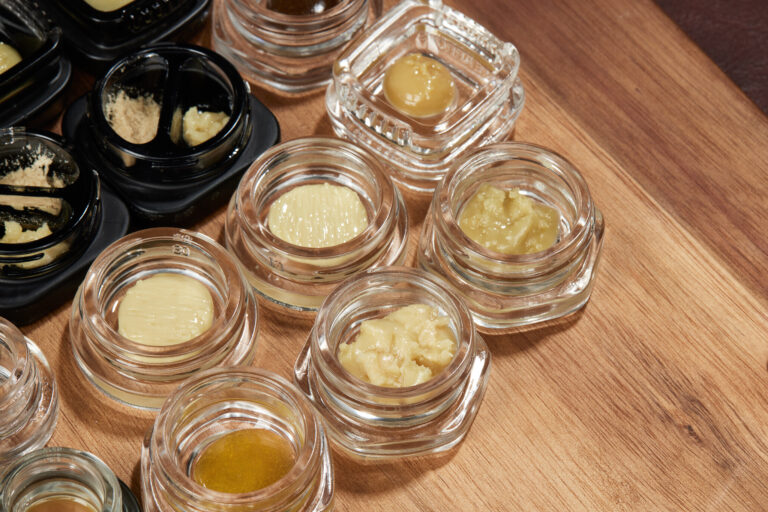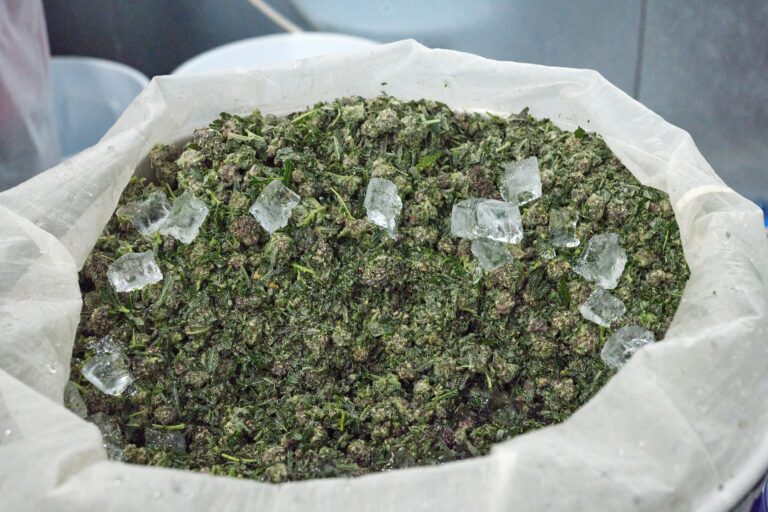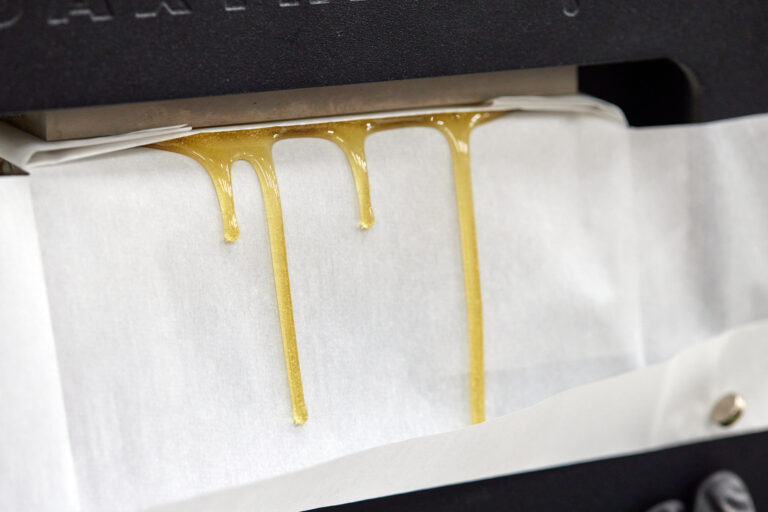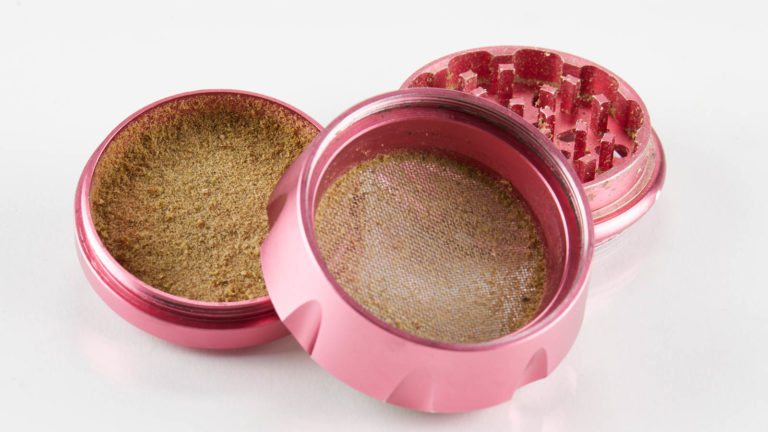If you've ever pressed a little hash between your fingers or taken a dab of live rosin, you've already experienced the art of solventless. These cannabis concentrates capture the essence of the plant without using any chemical solvents — just mechanical separation, patience, and craft.
What does solventless mean?
Solventless concentrates are made by physically removing the resin glands (trichomes) from cannabis material using ice, water, heat, pressure, and or mesh screens/filter bags. Unlike solvent-based products like live resin or distillate, which rely on butane, propane, ethanol, or carbon dioxide, solventless extraction methods preserve the full spectrum of cannabinoids and terpenes without chemical assistance.
The result is pure flavor, clean effects, and an experience that reflects the cultivar's true profile. Every variety of solventless, from full melt to rosin, starts with one goal: expressing the plant's characteristics in the cleanest and most natural way.
 Photo by: Gina Coleman/Weedmaps
Photo by: Gina Coleman/WeedmapsImage lightbox

Solventless vs. solvent-free vs. non-solvent
These labels can get confusing, so let's clarify:
- Solventless = no chemical solvents were used in the extraction process
- Non-solvent = often used interchangeably with “solventless,” describing the same method
- Solvent-free = the product was made with a solvent, but all residues were purged afterward through post-processing
When done right, both solvent-based and solventless products can be clean and safe. But solventless methods appeal to those who want to stay as close as possible to the natural plant and flavor.
Main types of solventless concentrates
Ice water hash (bubble hash)
 Photo by: Gina Coleman/Weedmaps
Photo by: Gina Coleman/WeedmapsImage lightbox

Ice water hash, also called bubble hash, is made by washing fresh-frozen or dried cannabis in ice water through ice water extraction to knock off the trichome heads. The resin is filtered through a series of micron bags and collected by grade.
Depending on purity, texture, and meltability, ice water hash can take several forms:
- Full melt: The highest quality grade of hash that fully melts into oil when dabbed, leaving little to no residue
- Pressed hash (temple ball): Hash pressed into spheres or pucks using gentle heat and pressure, inspired by traditional charas-making techniques from the Himalayas
- Piatella: Cold-cured ice water hash with a buttery, creamy texture made from fresh-frozen material, prized for its aroma and smooth melt
- Unpressed hash: A general term for mechanically pressed hash made from ice water or dry sift, often shaped into pucks or slabs
High-end ice water hash is often labeled with a star rating, where five- or six-star refers to true full melt quality.
Rosin
 Photo by: Gina Coleman/Weedmaps
Photo by: Gina Coleman/WeedmapsImage lightbox

Rosin is made by pressing cannabis flower, kief, or mostly ice water hash between heated plates using a rosin press, applying pressure to squeeze out the resin. This process creates a very clean product without the presence of plant matter — this is the oil that you dab. Rosin can become a range of different products with different textures.
- Fresh press: Pressed and packaged immediately, translucent and sap-like
- Cold cure badder (or budder): cold-cured and whipped to a creamy, stable texture that enhances flavor and longevity
- Jam: Cured at warmer temperatures in sealed jars, forming a jam-like texture with small THCA crystals
- Rosin diamonds: THCA crystalline structures separated from rosin, leaving a terpene-rich sauce behind
Rosin can be enjoyed on its own or used to make other solventless products like cartridges and edibles.
Dry sift and kief
 Photo by: Gina Coleman/Weedmaps
Photo by: Gina Coleman/WeedmapsImage lightbox

Dry sift is made by gently sieving cannabis over fine mesh or micron screens, allowing resin heads to fall through while keeping plant material out. It's an ancient and elegant way of collecting trichomes without water or chemicals.
- Static dry sift: A refinement technique using static charge to attract and separate pure trichome heads for exceptional purity and melt
- Kief: A more casual version — the loose, powdery trichomes that gather at the bottom of grinders. This solventless concentrate contains a mix of trichome heads and some plant material, making it ideal for sprinkling onto bowls or into joints, or using in infusions.
When properly refined, dry sift can reach full melt quality comparable to top-tier ice water hash, while the kief cannot.
Why solventless matters
Beyond purity, solventless extracts connect modern cannabis to its history. The same basic principles used in today's labs trace back to traditional hand-rubbed charas, Moroccan kief, and Lebanese hashish. What's changed is the precision: cleaner inputs, colder temperatures, and refined micron screens have elevated solventless to a true craft.
Bottom line
Solventless concentrates represent cannabis in its purest form: nothing added, nothing taken away. Whether you're collecting kief from your grinder, washing full melt hash, or dabbing live rosin, you're engaging in a process rooted in tradition and guided by modern innovation.
The cannabis market has seen growing demand for these types of cannabis extracts, with consumers increasingly seeking out clean, transparent products. If you're seeking flavor, potency (THC and beyond), and transparency in your extract, solventless is where the plant speaks for itself. And whether you prefer to dab, vape, or sprinkle, the final product delivers an experience that honors the plant from start to finish.
Featured image by Gina Coleman/Weedmaps




